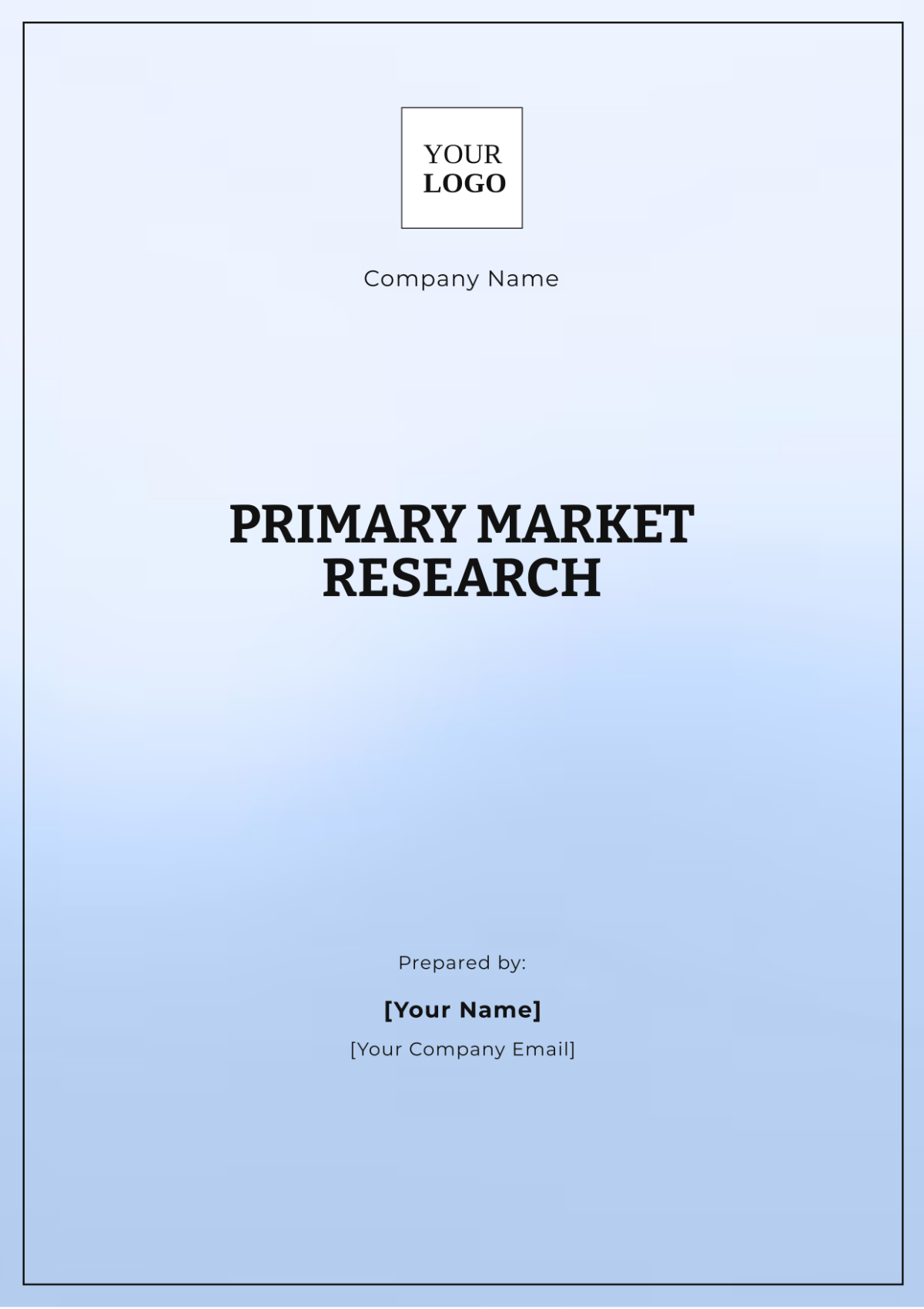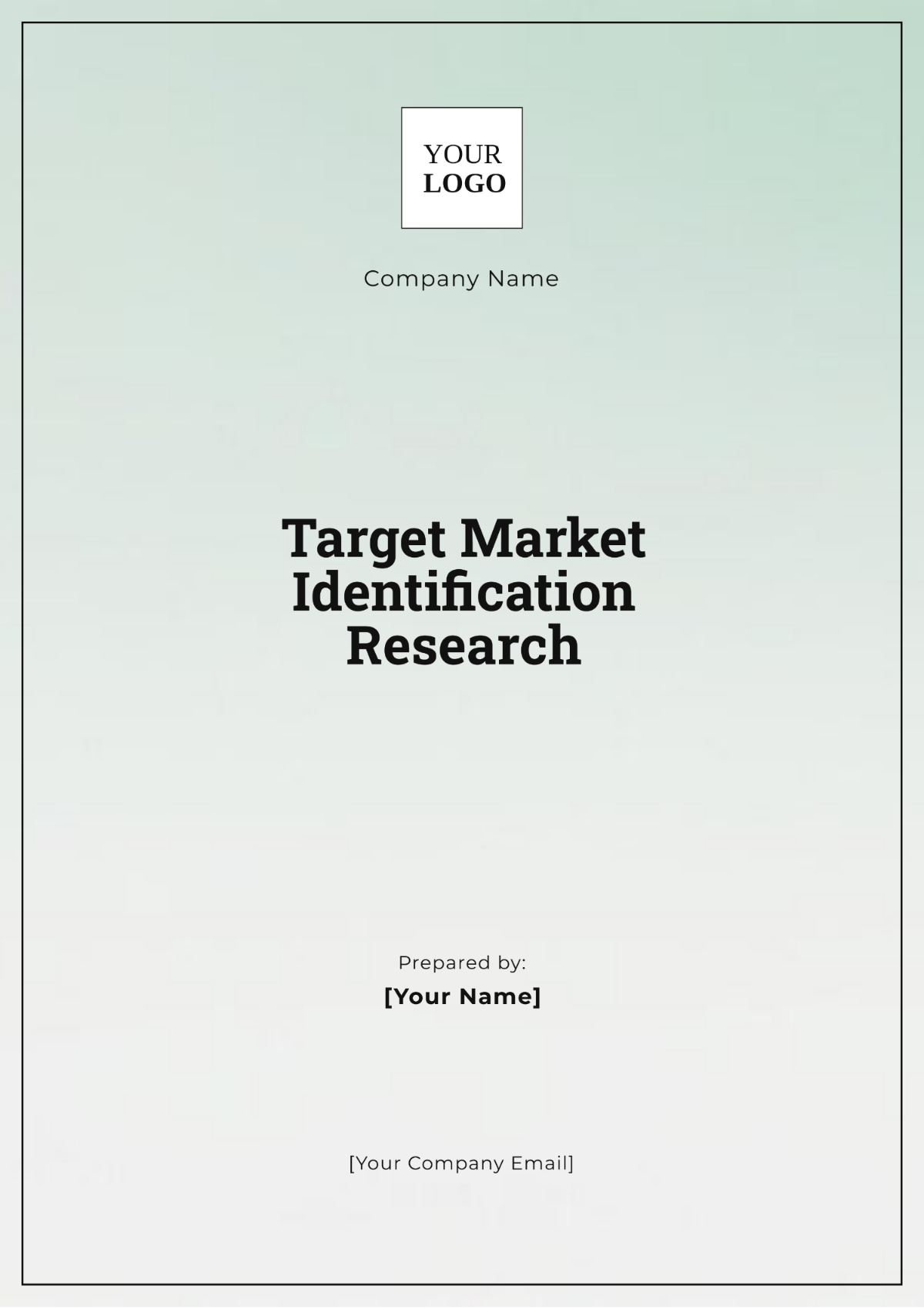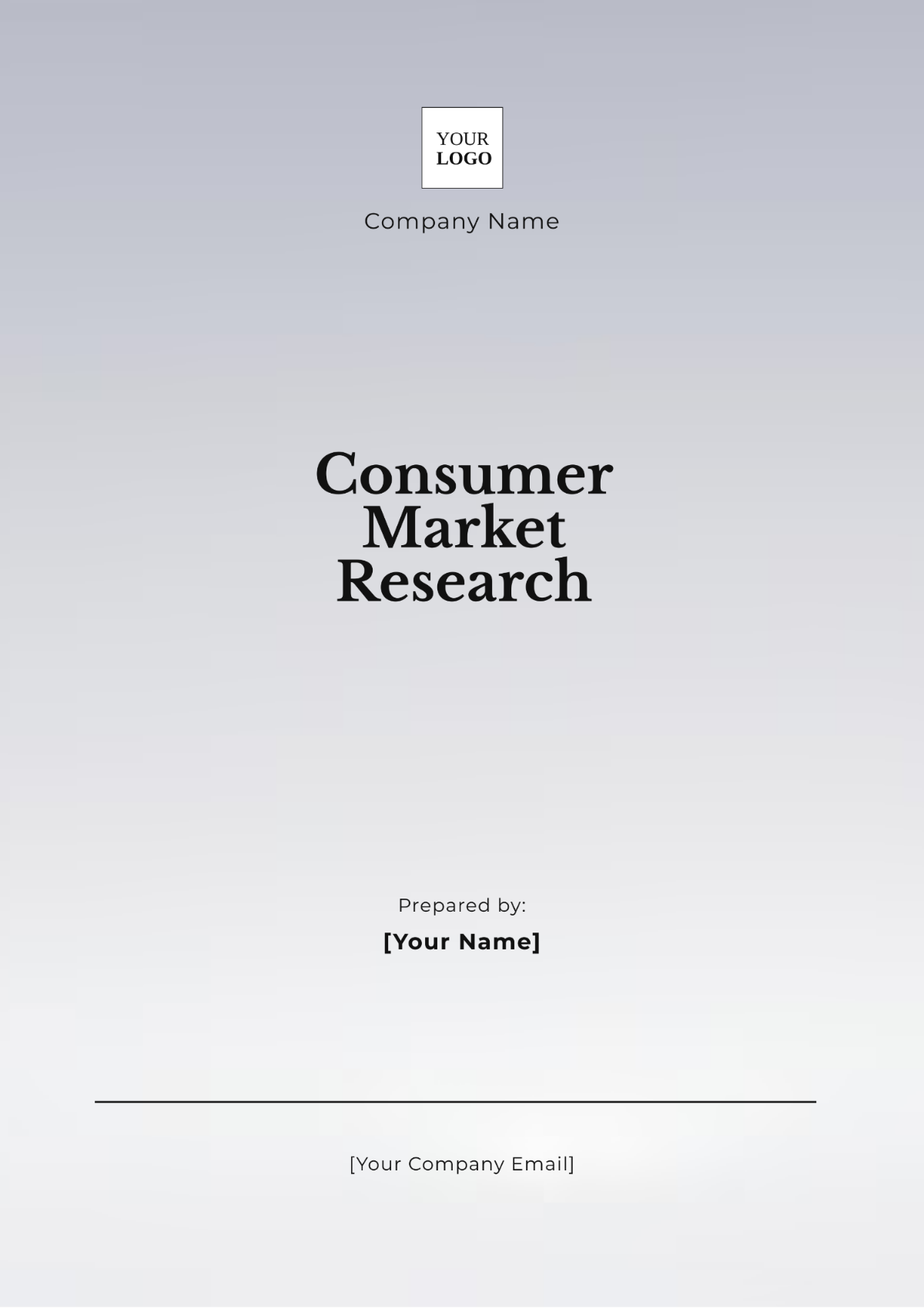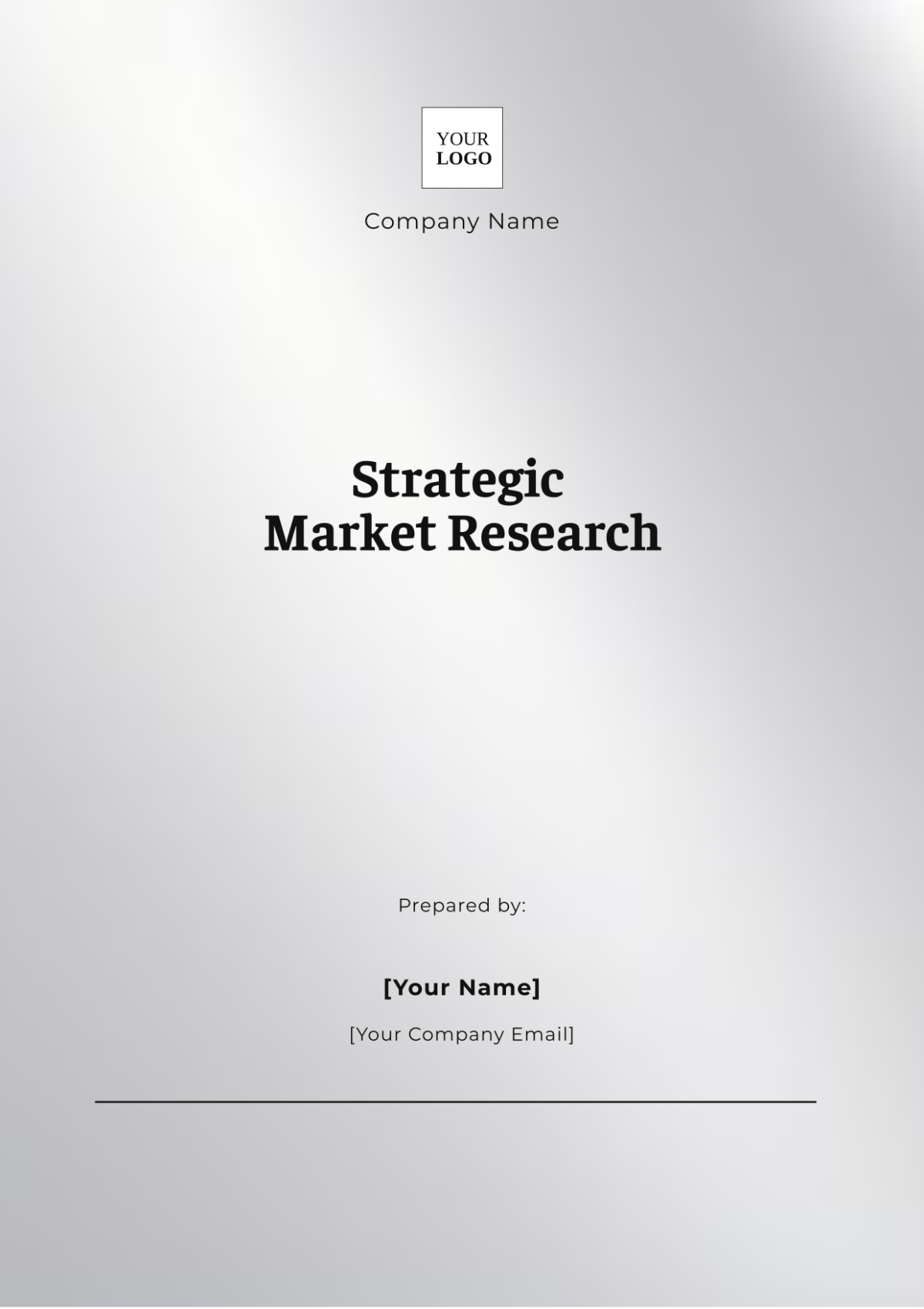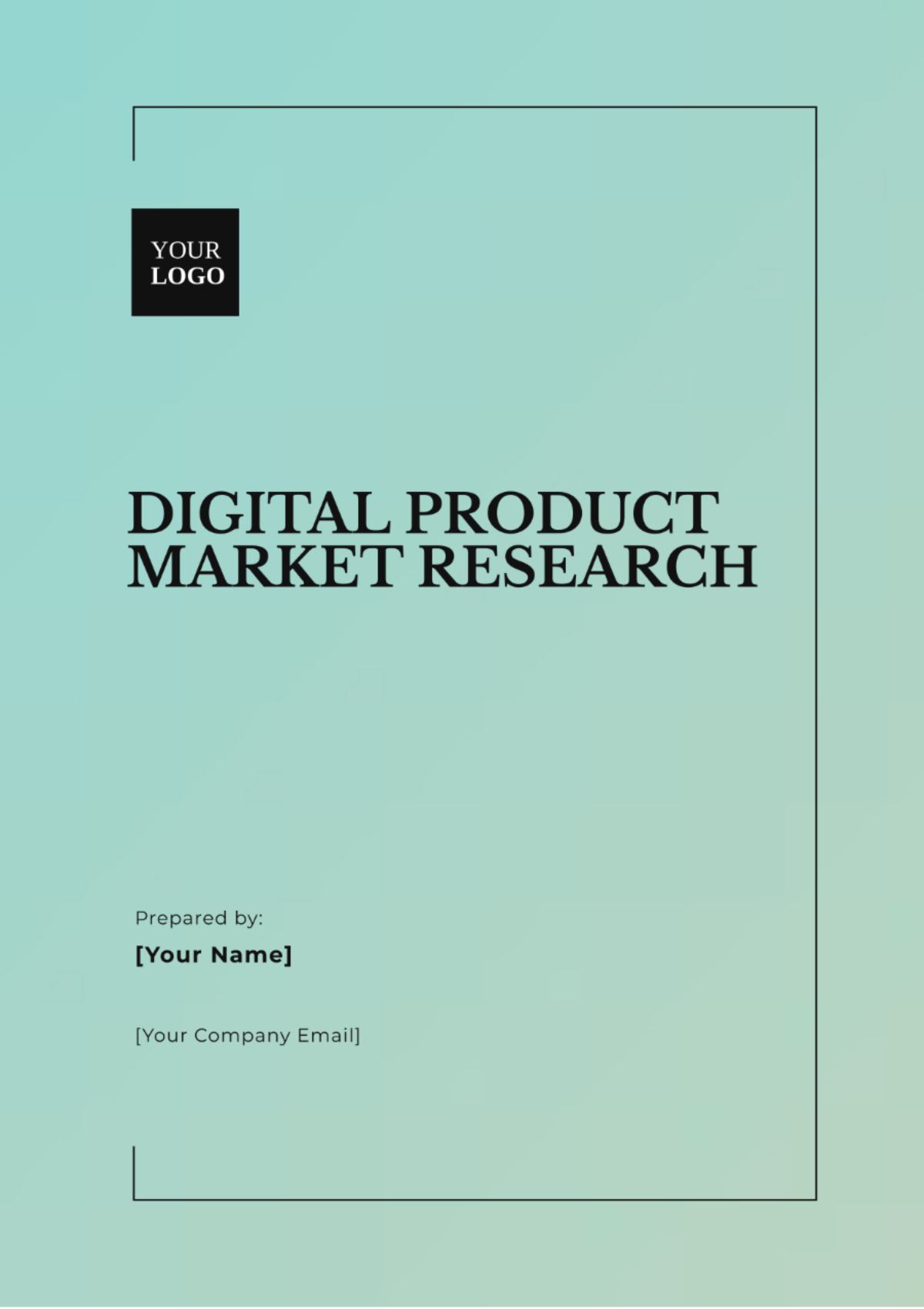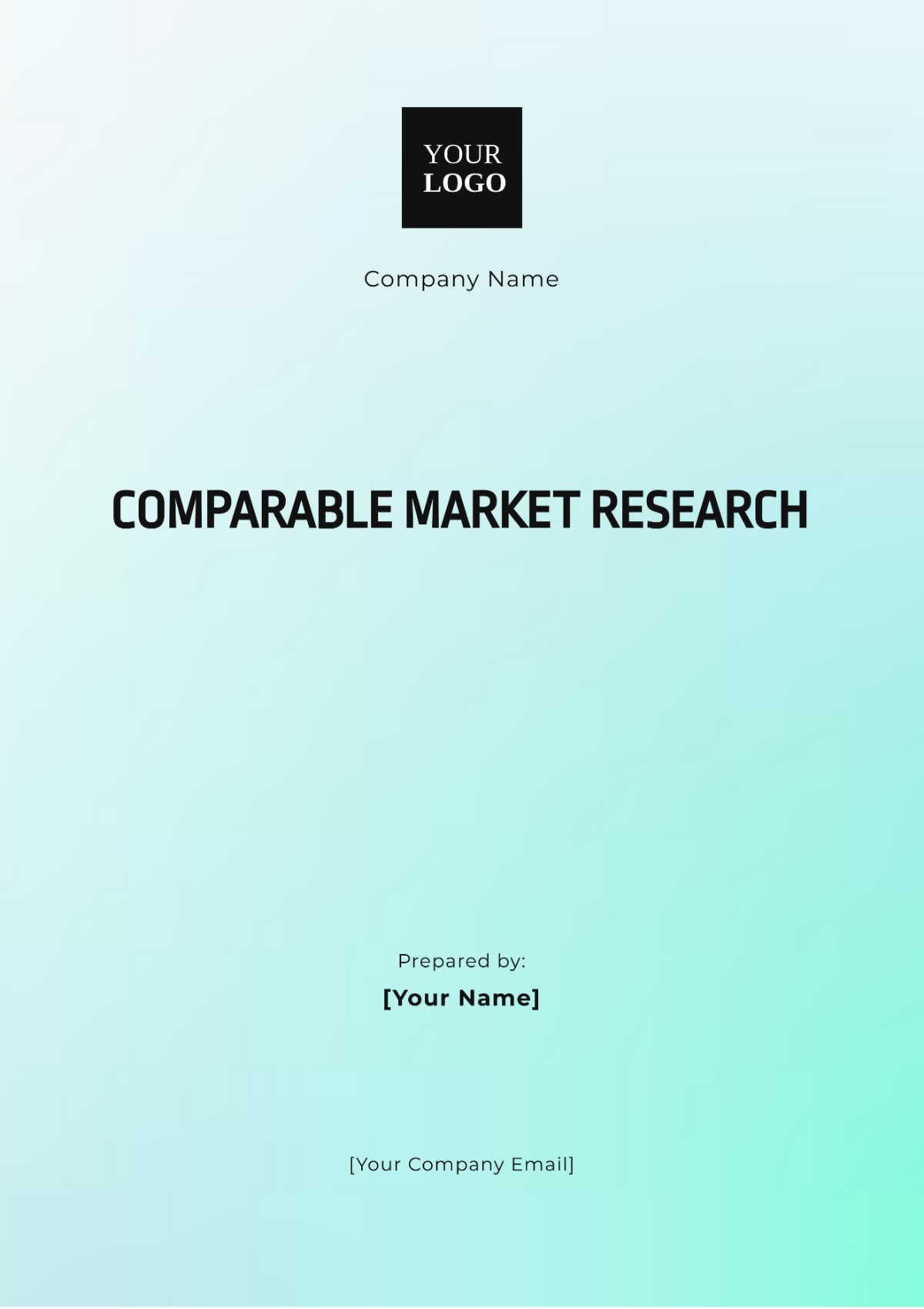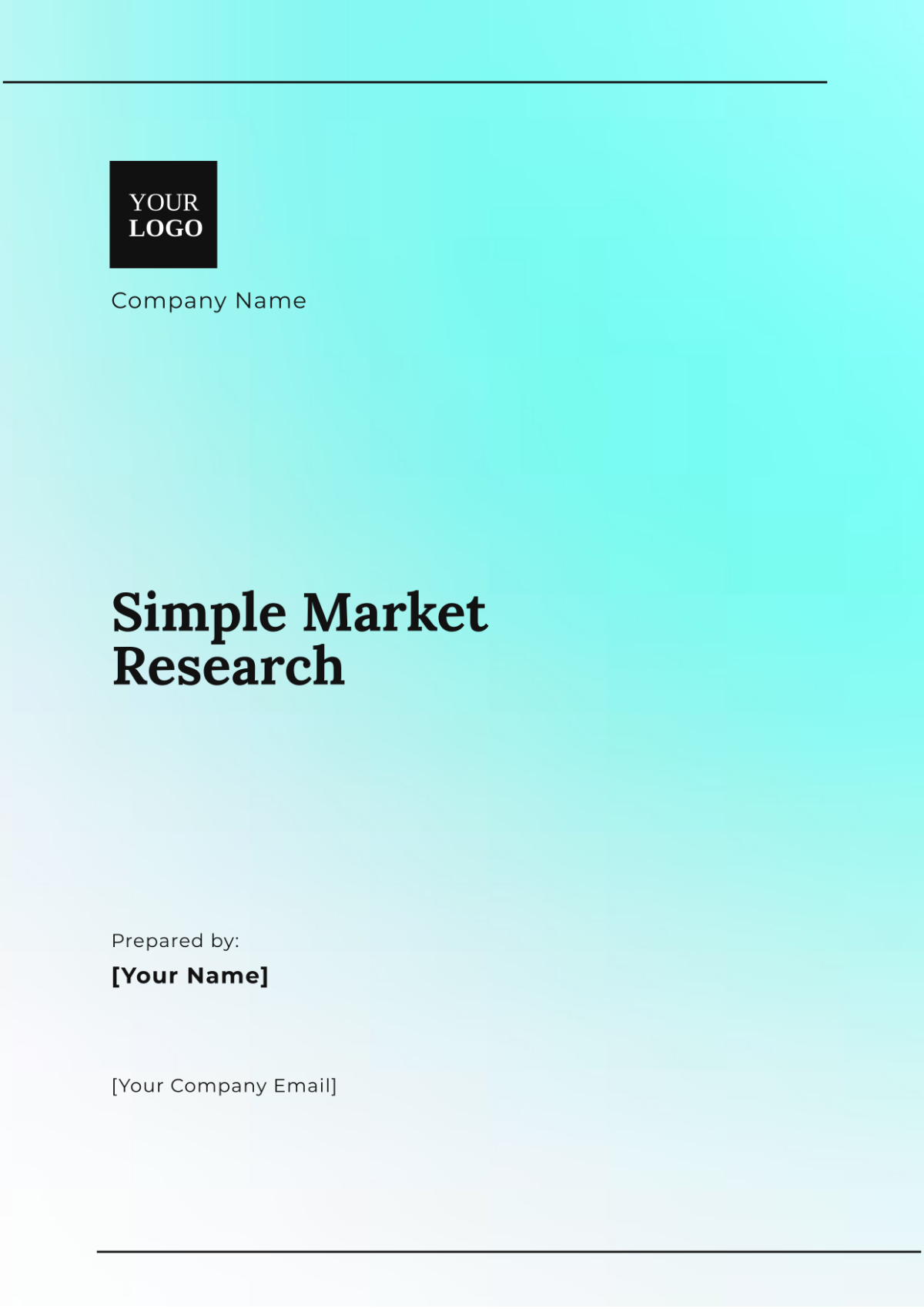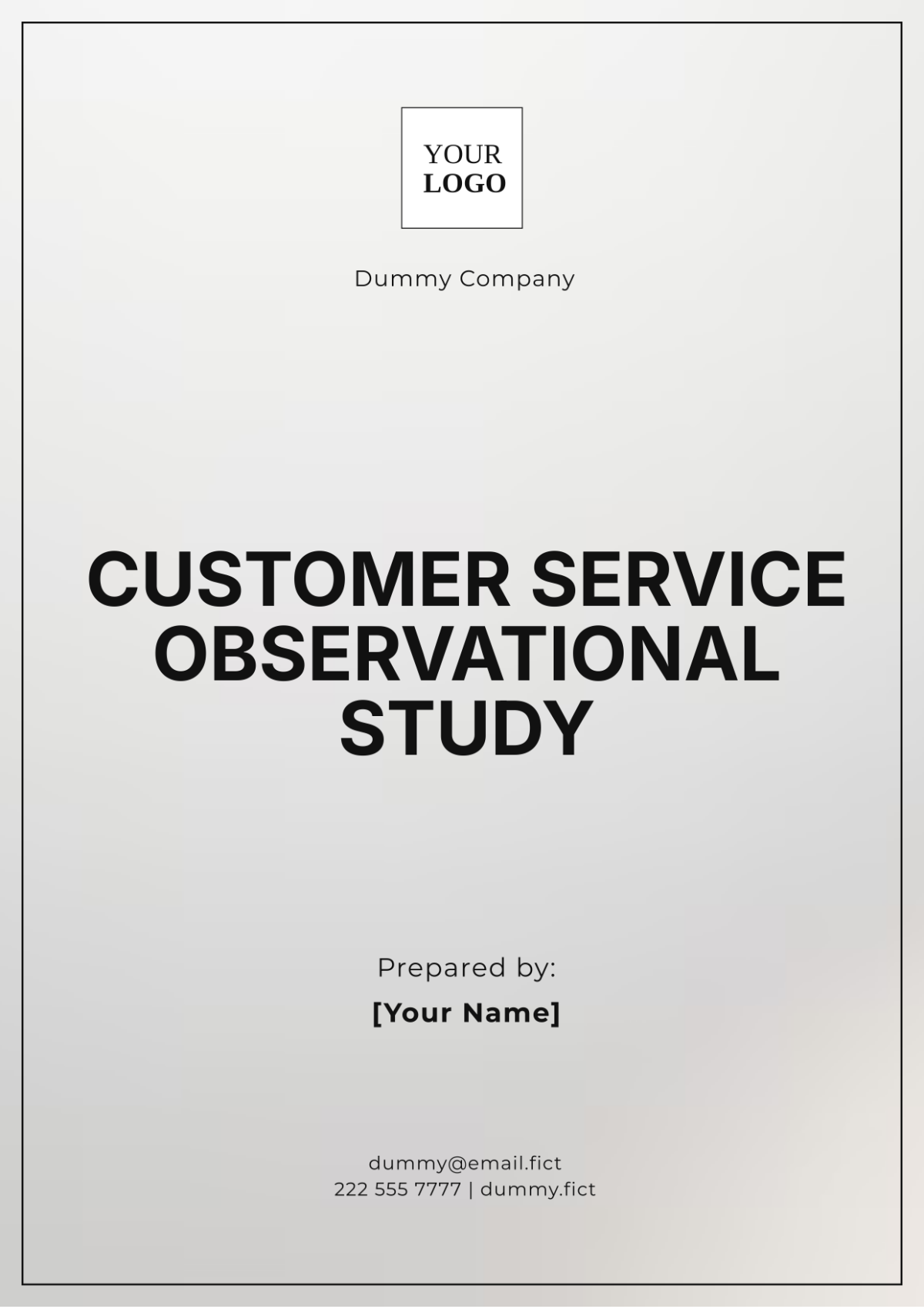Marketing In-Depth Consumer Research
I. Executive Summary
[Your Company Name] is embarking on a comprehensive consumer research project to gain a deeper understanding of our target audience. This research aims to provide insights into consumer demographics, preferences, behaviors, and brand perception. By leveraging these insights, we intend to optimize our marketing strategies and enhance our product offerings to better meet customer needs and strengthen brand loyalty.
II. Introduction
[Your Company Name] is dedicated to staying ahead of the curve by aligning our products and marketing efforts with the evolving needs and expectations of our customers. In a dynamic market landscape, consumer research is a vital tool for maintaining a competitive edge and ensuring customer-centric decision-making.
III. Objectives of Consumer Research
Identify Customer Segments
Segment our consumer base based on demographics, psychographics, and behaviors.
Understand Buying Behavior
Gain insights into how consumers make purchasing decisions, their product preferences, and the factors influencing their choices.
Evaluate Brand Perception
Assess how consumers perceive our brand, its strengths and weaknesses, and how it compares to competitors.
Identify Opportunities
Discover unmet consumer needs, emerging trends, and gaps in the market.
Refine Marketing Strategies
Utilize research findings to enhance our marketing strategies, messaging, and product development initiatives.
IV. Methodology
A. Data Collection
Surveys:
Conducted a combination of online surveys with a sample size of 1,000 participants and in-person surveys at key events and retail locations to gather quantitative data.
Interviews:
Conducted in-depth interviews with 50 participants from diverse backgrounds to gain qualitative insights into consumer experiences.
Social Media Analysis:
Monitored and analyzed conversations related to our brand and products on social media platforms over a three-month period to understand consumer sentiment.
B. Sample Selection
Random Sampling:
For online surveys, participants were randomly selected from a pool of registered users. For in-person surveys, participants were approached randomly at various locations to ensure representativeness.
Stratified Sampling:
Stratified the sample by age, gender, income, and geographic region to ensure a diverse representation of demographics and consumer segments.
C. Research Instruments
Questionnaires:
Developed comprehensive questionnaires for online and in-person surveys, covering topics such as demographics, purchasing behavior, and brand perception.
Interview Guides:
Prepared interview guides for in-depth interviews to probe deeper into consumer motivations, pain points, and suggestions.
D. Data Analysis Tools:
Utilized statistical analysis software (e.g., SPSS) for quantitative data and thematic analysis for qualitative data.
E. Data Analysis
Quantitative Analysis
Performed statistical analysis, including regression analysis, to identify correlations and determine the statistical significance of various factors influencing purchasing decisions.
Qualitative Analysis
Analyzed interview data thematically, identifying key themes, patterns, and consumer narratives.
Cross-Analysis
Combined quantitative and qualitative findings to triangulate insights and create a comprehensive consumer profile.
V. Consumer Profiling
Aspect | Details |
Demographic Profiles | 25 to 45 years old, primarily urban, diverse gender distribution, varied income levels. |
Psychographic Characteristics | Tech-savvy, value convenience, innovation, and sustainability. Early adopters of technology. |
Geographic Distribution | Urban and suburban areas, with a concentration in major metropolitan regions. |
VI. Consumer Behavior Analysis
In the realm of consumer behavior analysis, we delved deeply into the intricacies of how our target audience makes purchasing decisions and interacts with our products. Through a combination of surveys, interviews, and social media analysis, we gained valuable insights into their preferences, motivations, and pain points. Our findings unveiled a well-structured consumer journey, marked by thorough online research, in-store product evaluations, and ultimately online purchases. Notably, we identified the pivotal role of online reviews and peer recommendations in influencing buying choices. Consumers prioritize product attributes such as performance, durability, and sustainability, but price sensitivity also plays a significant role. Understanding these nuances in behavior equips us with the knowledge needed to refine our product offerings and marketing strategies effectively.
A. Purchasing Journey
Consumer behavior analysis reveals a well-defined purchasing journey, starting with online research, followed by in-store visits for product evaluation, and culminating in online purchases. Trust in online reviews and peer recommendations significantly impacts purchase decisions.
B. Product Preferences
Consumers prioritize product features such as performance, durability, and sustainability. Price sensitivity exists, but consumers are willing to invest in quality.
C. Influence of Brand Perception
The perception of our brand as innovative and eco-conscious positively influences purchasing decisions. Brand loyalty is also driven by positive customer service experiences.
VII. Competitor Analysis
Our competitor analysis was a comprehensive evaluation of the competitive landscape within our industry. We closely examined key rivals, including [Competitor 1] and [Competitor 2], dissecting their product offerings, branding strategies, and market positioning. By benchmarking our brand perception against these competitors, we gained a clearer picture of our strengths and areas where improvement is needed. It's worth noting that our brand is perceived as equally innovative and environmentally conscious as our competitors. This analysis underlined the importance of customer service in shaping brand loyalty, an aspect where we have a competitive edge. We also identified opportunities to outperform competitors by introducing a loyalty rewards program, further strengthening our position in the market.
A. Competitor Landscape
Our primary competitors include TechWave Solutions and InnovateTech Inc. They offer similar products but have distinct brand identities and marketing strategies.
B. Brand Perception Benchmark
Our brand perception is competitive, with consumers perceiving us as equally innovative and environmentally conscious as our competitors. We hold a strong position in terms of customer service and post-purchase support.
C. Competitive Advantages
We have identified opportunities to outperform competitors by leveraging our strong customer service reputation and introducing a loyalty rewards program.
VIII. Findings and Insights
A. Consumer Segmentation
We have identified three key consumer segments: Tech Enthusiasts, Eco-conscious Shoppers, and Price-Sensitive Shoppers, each with unique preferences and behaviors.
B. Brand Perception
Consumers perceive us as innovative and eco-friendly, but there is an opportunity to strengthen our brand's emotional connection with customers.
C. Purchasing Behavior
The research highlights the importance of online reviews and peer recommendations in shaping purchasing decisions. Convenience, product quality, and price remain key drivers.
IX. Recommendations
A. Segmented Marketing Strategies
Develop customized marketing strategies for each consumer segment to better address their specific needs and preferences.
B. Enhanced Branding
Strengthen brand messaging to emphasize innovation and sustainability while creating emotional connections with consumers.
C. Online Reputation Management
Implement strategies to encourage positive online reviews and testimonials, leveraging satisfied customers as brand advocates.
D. Product Quality Assurance
Focus on product quality and durability to maintain customer satisfaction and loyalty.
X. Implementation Plan
Activity | Timeline | Responsible Teams | KPIs |
Segmented Marketing Strategies | 12 months | Marketing | Customer satisfaction scores, revenue growth. |
Enhanced Branding | 6 months | Marketing | Emotional connection metrics, brand perception improvement. |
Online Reputation Management | Ongoing | Marketing, Customer Support | Positive online reviews, sentiment analysis. |
Product Quality Assurance | Ongoing | Quality Assurance | Product return rates, customer complaints. |
XI. Budget and Resource Allocation
Expense Category | Allocation (USD) |
Research Project | [Amount] |
Marketing Campaigns | [Amount] |
Quality Assurance | [Amount] |
Online Reputation Management | [Amount] |
Loyalty Rewards Program | [Amount] |
Budget: Allocate [Amount] for the research project, implementation of recommendations, and ongoing monitoring.
Resource Allocation: Distribute resources across research tools, participant incentives, marketing campaigns, and quality assurance efforts.
XII. Conclusion
This consumer research project has provided invaluable insights into our target audience, their behaviors, preferences, and brand perception. By implementing the recommendations, [Your Company Name] aims to enhance our marketing strategies, strengthen customer relationships, and maintain a competitive edge in the market. We are committed to delivering products and experiences that resonate with our diverse consumer base and align with their values and expectations.











